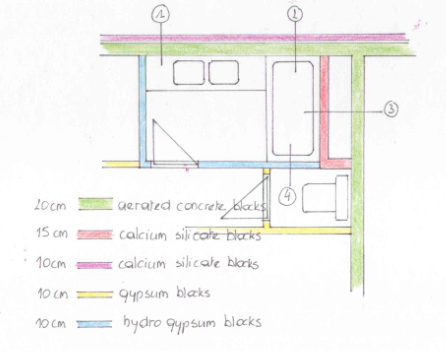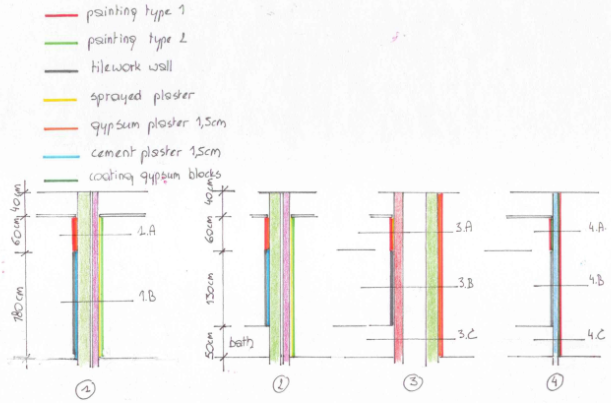The past two months I have been busy making old fashioned quantity take-offs based on plans in dwg format and figures to be put in an excel file.
The first project would be realised in a building team. So I could make sure that the quantity take-off would deliver knowledge for the developer, the designer and for the constructor. A hideous task but very rewarding.
The following projects were more old fashioned school: projects in a design-bid-build setting with the sole purpose of checking the bill of quantities and gaining no other knowledge whatsoever. The contractor made a bid based on the quantity take-off delivered by the architect and considered it to be presumably. But, as it often goes in private projects, the negotiations tend towards a total fixed price so the quantities presumed at first need to be checked.
That is where I pop in. The estimator is busy with his next "box" - cfr my first articles on this blog last year - and doesn't have the time to dig in the previous one. And another set of eyes detects other things. So they pay me to do the job.
The big difference with a decade ago is that there isn't any detailed quantity survey available to ease and shorten this time consuming control job. And skipping the control is no option because the rate of mistakes is no less than 10 years ago, quite on the contrary ...
Why ?
The first problem is the marketing motto of BIM software: it will shorten the time needed on the drawing table. What they don't mention is the vast amount of extra time needed to put all the parameters right in order to get the thorough quantity take off needed to finetune the estimation to its lowest price. The second problem is the lack of knowledge about estimation of the person who makes the drawings.
Let me give you an example: the walls in a bathroom of an apartment and judge for yourself.


Next question: how are we going to deal with this given the still existing "design-bid-build" culture and the possibilities new software has to offer ?
Here is my point of view.
The designer really sticks to his core business and chooses the software who gives the best rendering possibilities in the shortest possible time. His output reaches no further than a "moodboard" so that every participant in the building process can get the "look and feel" of the project.
Than the engineers have a look at it and determine the width of the construction needed for stability and the insulation needed for thermic and acoustic comfort desired by the client.
BIM is primarily a database and should also be threated this way. It contains solely information of the engineers and contractors. Nice rendering possibilities remain in the "moodboard" software.
Yes, this means drawing everything twice but the second pair of eyes allows you to detect errors and opens up good old fashioned communication - sometimes people, in business, tend to forget that we can also use our mouth for speech instead of our fingers.
There are two possible ways to create this BIM depending on the knowledge of the person making the model.
- He/she knows how to estimate from a contractor's point of view. In this case everything of what is drawn in the example above is to be put into the model with the correct coding towards development, object and materials. A job as hideous as my excel file, believe me !
- He/she never worked as an estimator at a contractor company and therefore lacks the knowledge for thorough coding. In this case he/she makes sure that the parameters who generate the quantity take-off are left blank. This under the motto to put only these things into the model/database that are correct and generate knowledge for the other partners in the building process.
- When you are not familiar with parameters in BIM, don't deliver the quantity take-off to the contractor. It only confuses him when he gets the wrong figures.
- Invite the contractor for a short briefing on how to use the BIM model in a BIM viewer software. Give him a locked BIM model to explore while estimating.
Kind regards,
Peggy
